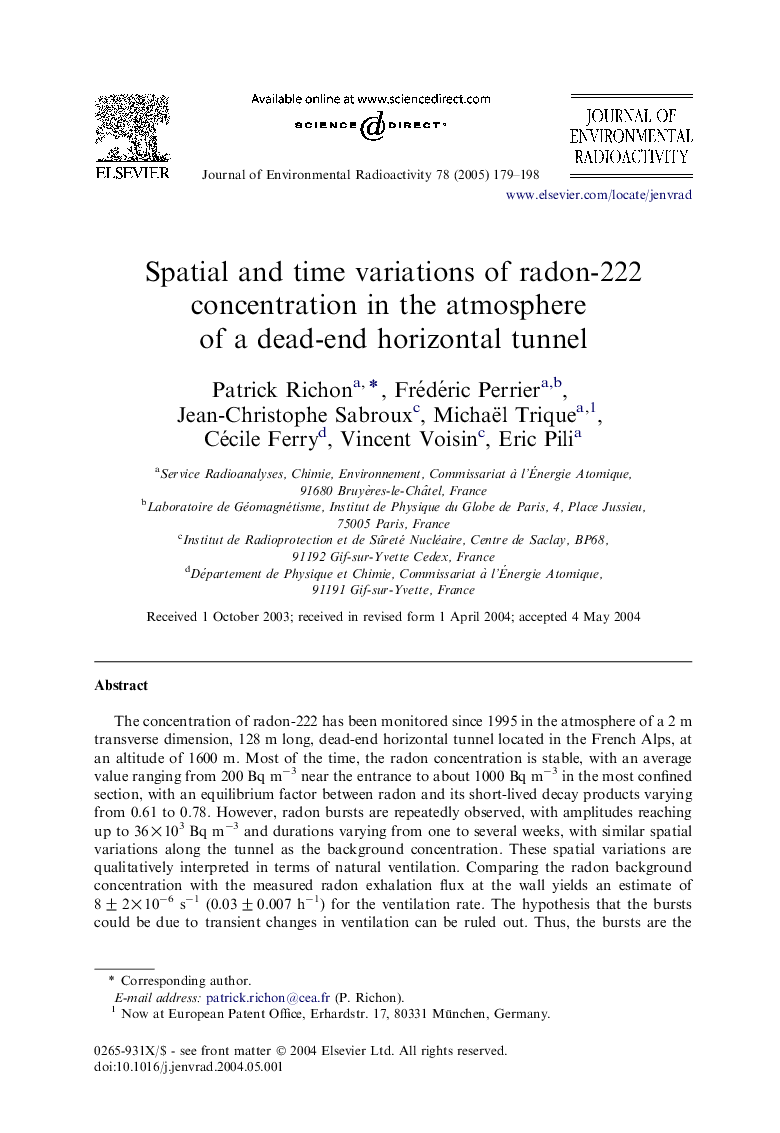| Article ID | Journal | Published Year | Pages | File Type |
|---|---|---|---|---|
| 10686973 | Journal of Environmental Radioactivity | 2005 | 20 Pages |
Abstract
The concentration of radon-222 has been monitored since 1995 in the atmosphere of a 2 m transverse dimension, 128 m long, dead-end horizontal tunnel located in the French Alps, at an altitude of 1600 m. Most of the time, the radon concentration is stable, with an average value ranging from 200 Bq mâ3 near the entrance to about 1000 Bq mâ3 in the most confined section, with an equilibrium factor between radon and its short-lived decay products varying from 0.61 to 0.78. However, radon bursts are repeatedly observed, with amplitudes reaching up to 36 Ã 103 Bq mâ3 and durations varying from one to several weeks, with similar spatial variations along the tunnel as the background concentration. These spatial variations are qualitatively interpreted in terms of natural ventilation. Comparing the radon background concentration with the measured radon exhalation flux at the wall yields an estimate of 8 ± 2 Ã 10â6 sâ1 (0.03 ± 0.007 hâ1) for the ventilation rate. The hypothesis that the bursts could be due to transient changes in ventilation can be ruled out. Thus, the bursts are the results of transient increased radon exhalation at the walls, that could be due to meteorological effects or possibly combined hydrological and mechanical forcing associated with the water level variations of the nearby Roselend reservoir lake. Such studies are of interest for radiation protection in poorly ventilated underground settings, and, ultimately, for a better understanding of radon exhalation associated with tectonic or volcanic processes.
Related Topics
Physical Sciences and Engineering
Energy
Nuclear Energy and Engineering
Authors
Patrick Richon, Frédéric Perrier, Jean-Christophe Sabroux, Michaël Trique, Cécile Ferry, Vincent Voisin, Eric Pili,
